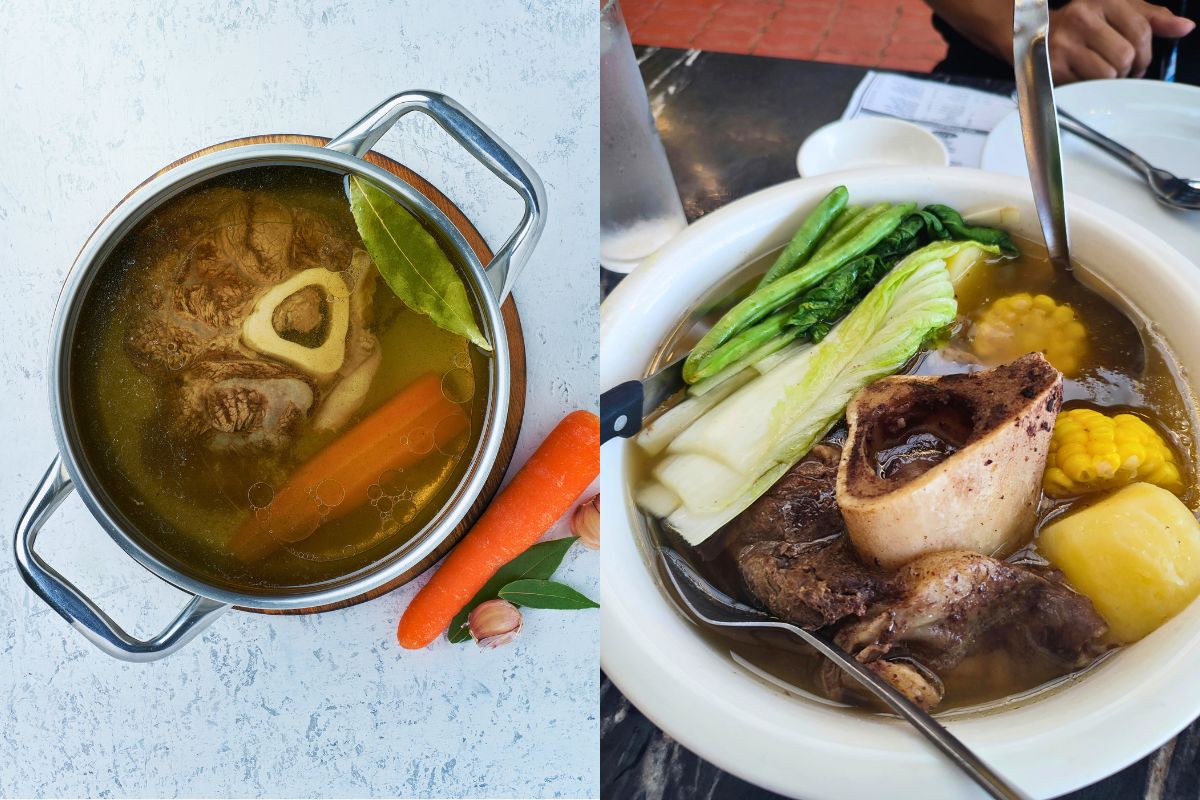Bone Broth: The Ancient Elixir Making a Modern Comeback

Health fads come and go, but bone broth has kept simmering its way through kitchens of mothers, healers, and chefs for the past centuries. To many of us, it was a necessity to use up leftover bones, but now many nutritionists and self-help gurus have deemed it a superfood. Given the flavour, nutrients, and incredible health benefits bone broth claims, it is no surprise it has become popularised in today’s health movement.
Table of Contents
ToggleWhat Is Bone Broth?
Making bone broth takes a good amount of time, as it involves simmering the bones of animals to make a clear and protein-rich extract. Something that requires around 12-24 hours of effort is indeed difficult in today’s fast-paced world. Unlike broth or stock, it needs to be slow-cooked to achieve the required nutrients. These include collagen, gelatine, minerals, healthy fats, amino acids, and collagen.
You can use bones from almost any animal, including chickens, cows, pigs, and even fish. Enhancing the taste and nutritional value is the addition of herbs, vinegar, and veggies.
A Brief History of Bone Broth
The legacy of bone broth is thousands of years old. Many cultures across the globe cherished it for its medicinal uses, including the Greeks and the Chinese. Ancient Chinese medicine referred to it as a “yang tonic”, believing it to support healthy digestion and strengthen the kidneys.
While some European cultures used to turn bone broth into soup or stew, others, like Native American tribes, boiled bones for days in an attempt to extract every ounce of nutrition. Jews also loved their chicken broth, referring to it as “Jewish penicillin” because of its effectiveness at treating flu and cold symptoms.
Modern society’s shift towards paleo, keto, and Whole30 diets has reignited interest in it alongside increased awareness of gut health.
Nutritional Breakdown
The nutrient-rich composition of bone broth is difficult to rival with other food sources:
- Collagen: The most abundant component of collagen within your body is collagen. It is instrumental in maintaining skin elasticity, joint flexibility, and gut integrity.
- Gelatin: Collagen’s derivative, gelatin, is equally beneficial, helping with the digestion process and acting as a food source for healthy gut bacteria.
- Glutamine: This amino acid is a band-aid for a damaged gut lining and is especially useful for those suffering from leaky gut syndrome.
- Glycine: Considered a soothing amino acid that promotes sleep, muscle recovery, and detoxification of the body.
- Proline: In charge of the maintenance of skin as well as renewing tissues.
- Calcium, Magnesium, Phosphorus: Significant minerals indispensable for bones and metabolism.
Bone broth is perfect for those wanting to be on a low-carb, high-protein diet because one cup satisfies the meathead in you with 6-10g of protein, without a single carbohydrate and negligible amounts of fat.
Top Health Benefits of Bone Broth
1. Supports Joint Health
Bone broth has glucosamine and chondroitin, which may lessen inflammation and pain in the joints. The collagen helps in the healing process of cartilage and connective tissue.
2. Improves Gut Health
Bone broth includes gelatin, which may close the ulcers in the gut walls. This feature may especially benefit patients with leaky gut syndrome, irritable bowel syndrome, or other chronic gut issues.
3. Boosts Immunity
Due to its resilience, it may help prevent infections due to its rich amino acid content – arginine, glutamine and cysteine.
4. Promotes Healthy Skin, Hair & Nails
Bone broth may reduce wrinkles and restore skin’s suppleness. Collagen and gelatine are crucial components that give skin, hair and nails their sheen.
5. Aids Sleep and Brain Function
Glycine has a calming effect and can help improve sleep quality. It also supports neurotransmitter function, enhancing mood, focus, and memory.
6. Detoxifies the Body
Glycine and potassium are present in it, which aids the liver. Toxins can be eliminated from the body naturally with the help of bone broth.
How to Make Bone Broth at Home
Making homemade bone broth is surprisingly easy, though it does require patience. Here’s a basic recipe:
Ingredients:
- 2–3 pounds of bones (beef, chicken, turkey, fish, or a mix)
- 1–2 tablespoons apple cider vinegar (helps extract minerals)
- 1 onion, chopped
- 2–3 carrots, chopped
- 2–3 celery stalks, chopped
- Garlic, herbs (thyme, rosemary), and bay leaves
- Salt and pepper to taste
- 12–16 cups of water
Instructions:
- Roast the bones (especially for beef or pork): Preheat oven to 400°F (200°C) and roast bones for 30 minutes for deeper flavor.
- Add all ingredients to a large stockpot or slow cooker.
- Bring to a boil, then reduce to a low simmer.
- Simmer for 12–24 hours. Skim off any foam or impurities.
- Strain and cool. Use a fine mesh sieve to remove solids.
- Store in glass jars in the refrigerator for up to a week or freeze for later use.
Store-Bought Bone Broth: What to Look For
If you’re short on time, store-bought options are widely available. But not all are created equal.
Tips:
- Look for organic and grass-fed sources.
- Ensure it is slow-simmered for at least 10–20 hours.
- Avoid added sugars, preservatives, or MSG.
- Go for a gelatinous texture when cooled—it’s a sign of real collagen content.
Some trusted U.S. brands include:
- Kettle & Fire
- Bonafide Provisions
- Pacific Foods
- Bare Bones
How to Add Bone Broth to Your Diet
You can enjoy bone broth in several ways:
- Sip it warm: Treat it like tea or coffee, especially in the morning or before bed.
- Use as a soup base: Makes any soup more nutritious.
- Add to grains: Replace water with broth when cooking rice, quinoa, or couscous.
- In smoothies: Freeze in cubes and add to savoury smoothies.
- In sauces and gravies: Adds depth of flavour and nutrients.
Bone Broth on Special Diets
Keto & Paleo:
Perfect for both diets due to high protein and zero carbs.
Whole30:
Bone broth made from clean ingredients without any sweeteners or additives follows the Whole30 guidelines.
Intermittent Fasting:
Many people consume it during fasting windows, as it provides electrolytes and amino acids without spiking insulin.
Who Should Avoid Bone Broth?
Most individuals don’t face issues with it, but those with histamine intolerance or glutamate sensitivity may experience headaches or other stomach-related issues, making it hard to consume bone broth.
Final Thoughts
More than a wellness dish, bone broth encapsulates centuries of tradition. From nurturing skin and healing the gut to providing warmth on chilly days, it is effortless and potent.
Bone broth goes back to the basics in a world dominated by fast food. It’s as uncomplicated as brewing it slowly, sipping it mindfully, and enjoying this ancient elixir.
Published by Azura Everhart
I'm Azura Everhart, Digital Marketing Specialist, with over five years of experience helping brands grow through smart, data-backed digital strategies. Holding a Bachelor's in Business Administration and a Diploma in Digital Marketing Strategy, I specialize in building campaigns that connect, convert, and create lasting impact. I also write about the latest in business innovation and health trends, aiming to make complex ideas practical and engaging for modern audiences. View more posts
Recent Post
Golf Resorts In Greece – Something’s Changing

Rediscover Luxury and Nature at Hotel Xcaret Mexico






